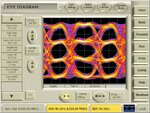xiangx93
Newbie level 6
I have been recently working on a PAM4 transmitter with its output having duty cycle distortion.In theory,its duty-cycle accords with the high-frequency clock's generating it.Since that clock only comes from an external clock going through a CML2CMOS converter and a series of CMOS buffers(over 20 stages),what could possibly go wrong?



